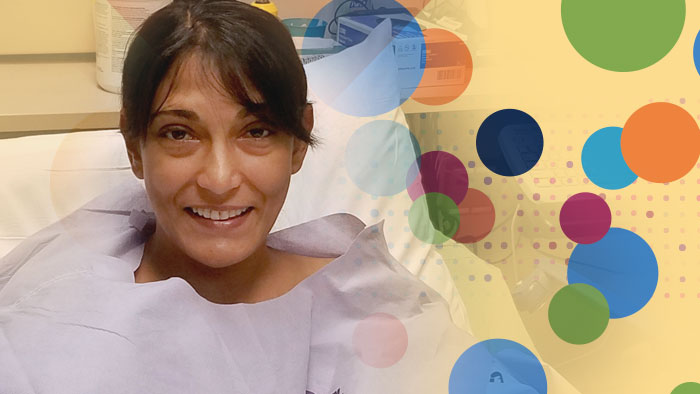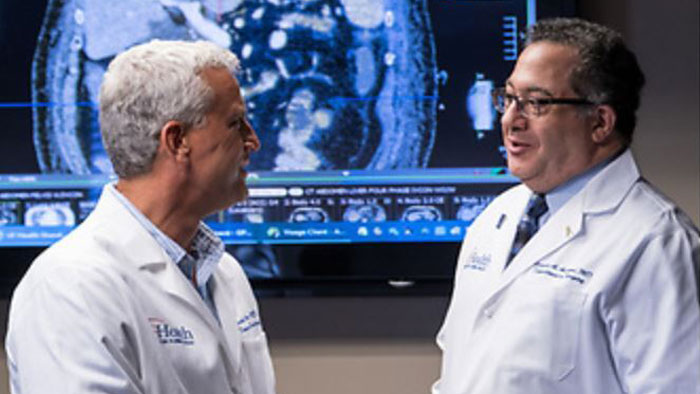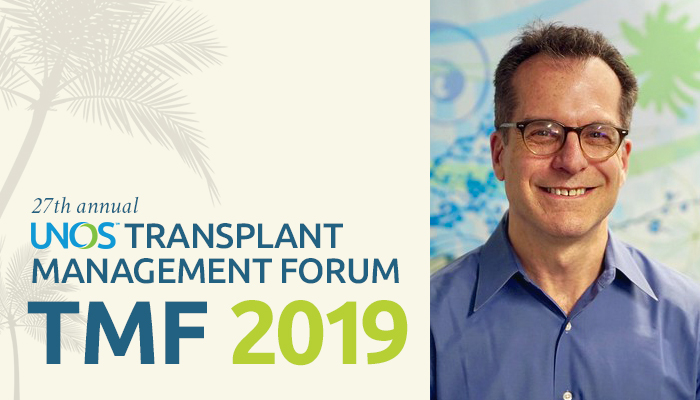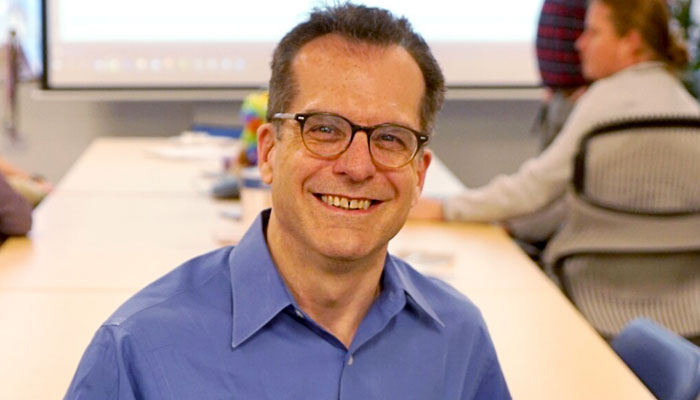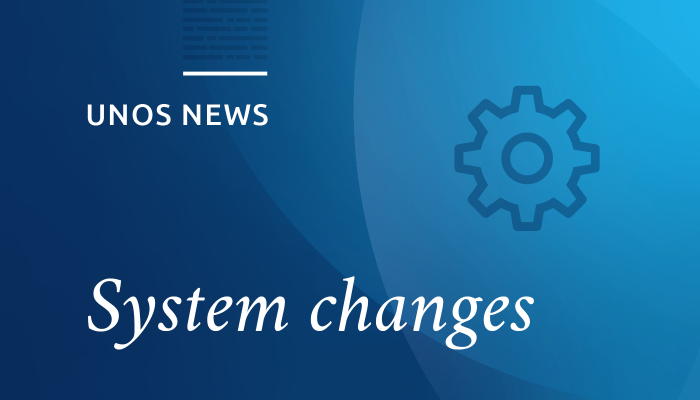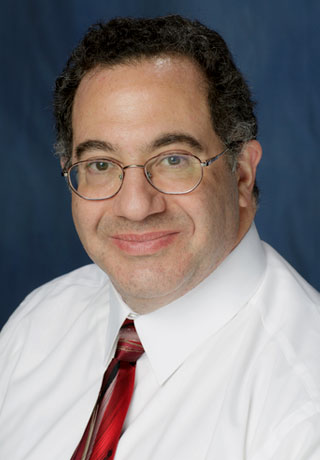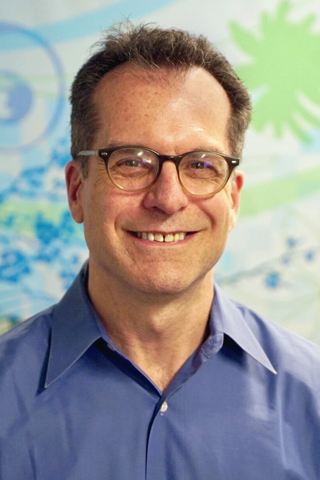
Innovation
Better screening accelerates organ offers
Using organ acceptance data to improve the decision-making process
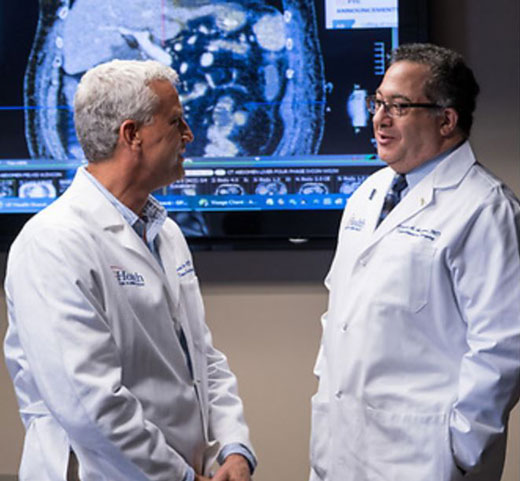
Mark Johnson (left) and Kenneth Andreoni.
As the surgical director of the University of Florida Health’s kidney-pancreas program, Kenneth Andreoni, M.D., often found it challenging to review UNetSM organ acceptance criteria. “There were so many characteristics of donor offers that transplant surgeons would consider ‘conditional,’” he said.
An organ transplant surgeon with more than three decades of experience, Andreoni believed there was a better way to more efficiently place organs. He envisioned a system that provided a detailed set of acceptance criteria for offers, which health care providers could program to better determine which types of organs their hospital would accept. In 2014, Andreoni decided to share his idea with UNOS chief technology officer, Alex Tulchinsky.
The former president of the United Network for Organ Sharing Board of Directors then began developing a comprehensive spreadsheet detailing the organ offers and candidate information that his hospital historically accepted.
Using that spreadsheet, Andreoni, Tulchinsky and UNOS business architect, Rob McTier began to discuss the feasibility of programming similar acceptance criteria into UNet as a way to increase the efficiency of the organ offer process.
“As we originally envisioned it, a transplant program would describe the types of organ offers that they would accept,” McTier explained. “As we further examined the idea, we wondered if participants [in a pilot program] would be able to describe all the different types of organ offers they would accept.” This filtering concept evolved to also include unwanted offers, and soon after the idea for the offer filters pilot was born.
A phased approach for offer filtering
In June 2019, UNOS launched the first phase of the pilot. During phase I, project participants representing 29 kidney programs from across the country used the Offer Filters Explorer tool to identify the organ offers they did not want to receive. Though the filters did not actually screen offers during this phase, UNOS used the information provided by participants to collect data on whether each offer would have been screened if the filter was turned on.
As one of the 29 pilot participants, Andreoni said he was amazed to see the number offers his hospital received. He was also encouraged by the opportunities he saw in using the filters tool to bypass offers. “It was impressive to see the number of offers our center received and how using the filters could help remove a large number of offers we would not routinely accept,”he explained.
After phase I concluded in December 2019, McTier worked with his colleagues at UNOS to review organ offers that participating programs received, compare organ acceptance data to the filters and survey the pilot participants about their experience in order to improve the platform. “In those surveys, many responded that they would bypass at least on one of the filters, so we felt like that was a pretty good green light for proceeding with phase II,” McTier said.
Getting to organ offer acceptance faster
As they gathered feedback from pilot participants to inform phase II, the UNOS researchers noticed a trend — many participants had a small number of patients on their list who they considered an extraordinary organ acceptance candidate. Based on that feedback, UNOS determined that it would be critical to allow hospitals to include patient-specific criteria in the filters. The researchers built this functionality into the system, with phase II of the offer filters project including candidate exclusion criteria for each filter as a safeguard. The exclusion criteria allow transplant programs to exclude certain candidates based upon their CPRA, whether there is zero-antigen mismatch, and the candidate’s age.
“Allowing people to make better and more efficient decisions, will help everyone.”
Kenneth Andreoni, M.D.
“For example, you could come up with a filter that would normally filter out kidney offers if the donor is more than 60 years old and the distance exceeds 500 nautical miles, unless the candidate’s CPRA exceeds 80 percent, or the candidate is a zero-antigen mismatch,” McTier said. “The algorithm will determine if the donor meets that criteria, but also if the candidate meets the exclusion criteria. So for the example I just provided of the 60-year-old donors that are from far away, the high CPRA candidates and the zero-antigen mismatch candidates would continue to get offers, but the other candidates on the list would get bypassed.”
Andreoni and McTier believe the added safeguard will address concerns about potentially choosing a filter that would exclude some candidates from receiving an organ that they may need, but that the hospital wouldn’t normally accept.
“Allowing people to make better and more efficient decisions, will help everyone,” Andreoni said.
UNOS plans to expand the project beyond kidney offers and launch phase II of the pilot project later this year. In preparation, UNOS has created an interactive tool called the Offer Filters Explorer that identifies potentially effective filters for each kidney transplant program using 2018 and 2019 organ acceptance data.
“Our ultimate goal is to improve outcomes for the candidates on the waiting list,” McTier said. “This means getting organs to candidates who could benefit from them as quickly and efficiently as possible, and minimizing the amount of cold ischemic time that the organ accumulates. Getting the offer to the right candidate in a more targeted manner can lead to an increase in organ utilization as well as in the number of candidates receiving a transplant.”
Read more about the offer filters pilot project, and watch unos.org for regular updates.


